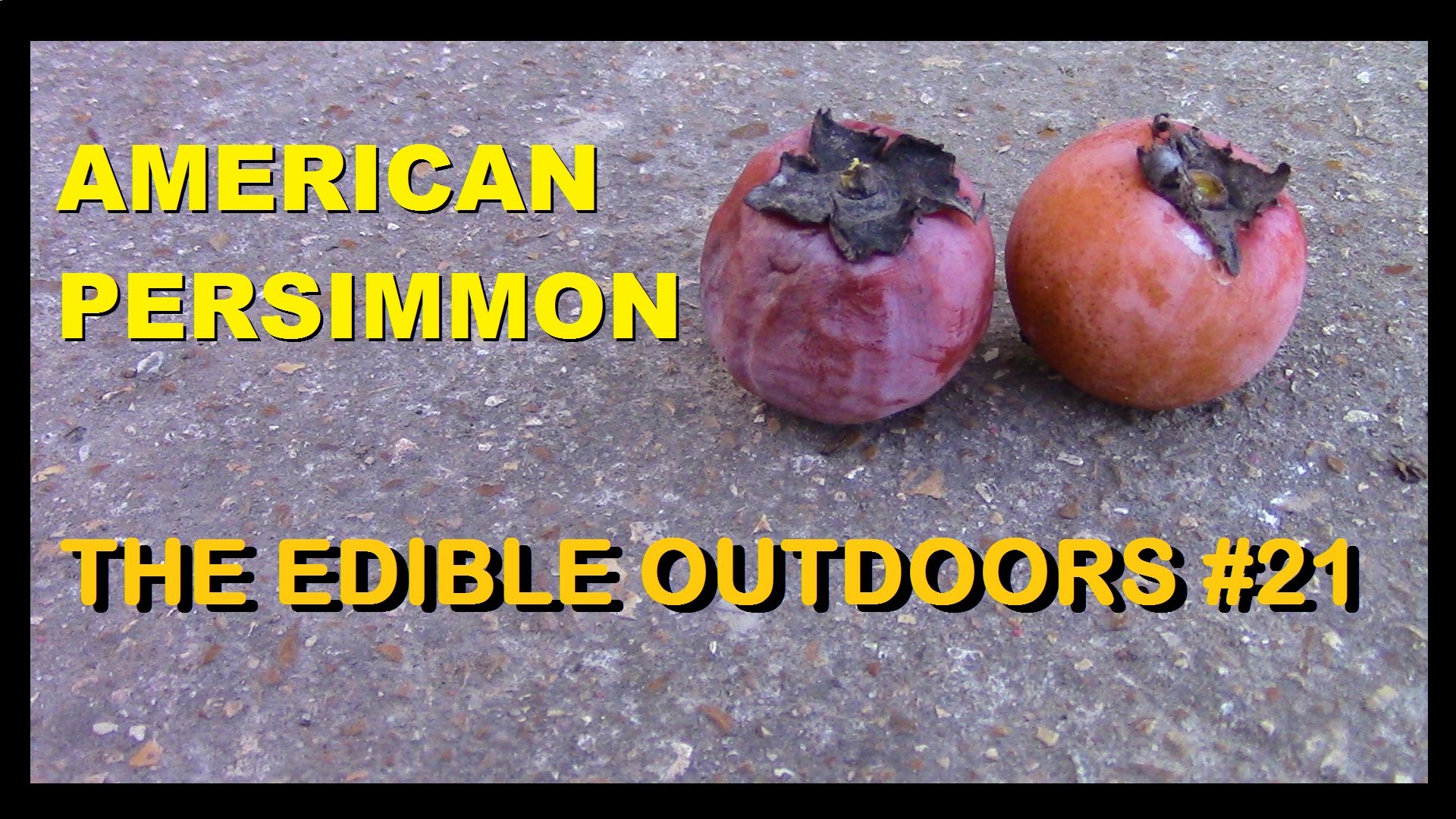
One of the fantastic new edible wild foods that I encountered in the recent years is the American Persimmon (Diospyros virginiana). It is a wonderful tree that can be found across much of South-East, as far west as Texas, Oklahoma, and Kansas and as far up the East coast as Long Island the bottom of Connecticut. I first “met” this tree last fall in Arkansas, and thankfully there are many of them around.

ABOUT THE TREE
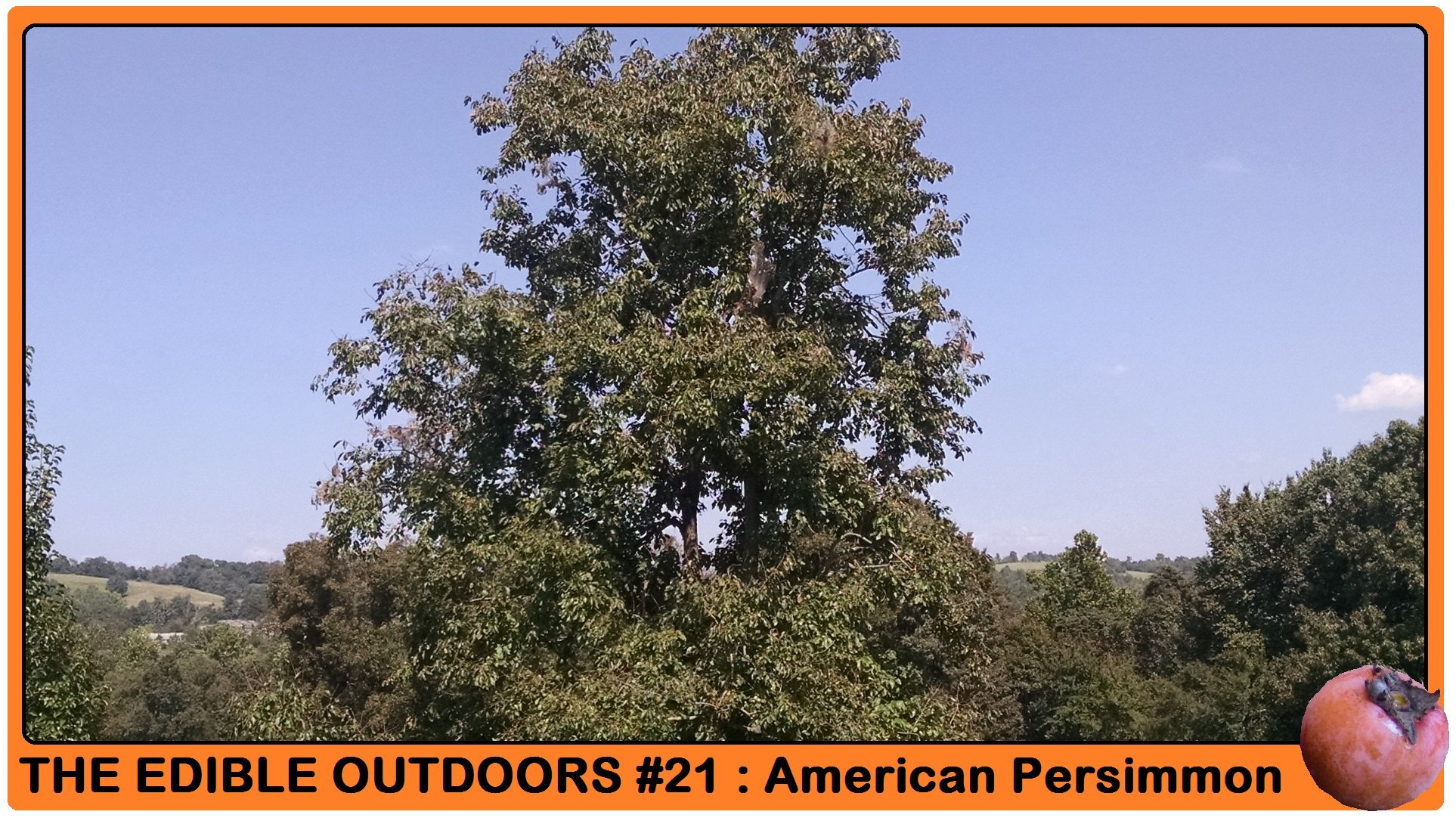
The tree of the American Persimmon can grow over 50 feet tall. Many cultivars can produce seedless fruit without pollination, but this species has dioecious flowers, which means that both a male and a female tree are needed for successful pollination, which leads to fruit. The fruit varies in shades of orange, and most that I have seen are round, and about 1” in diameter or just slightly larger. Trees usually must be more than 5 years old to start fruiting.

VARIETIES AROUND THE WORLD
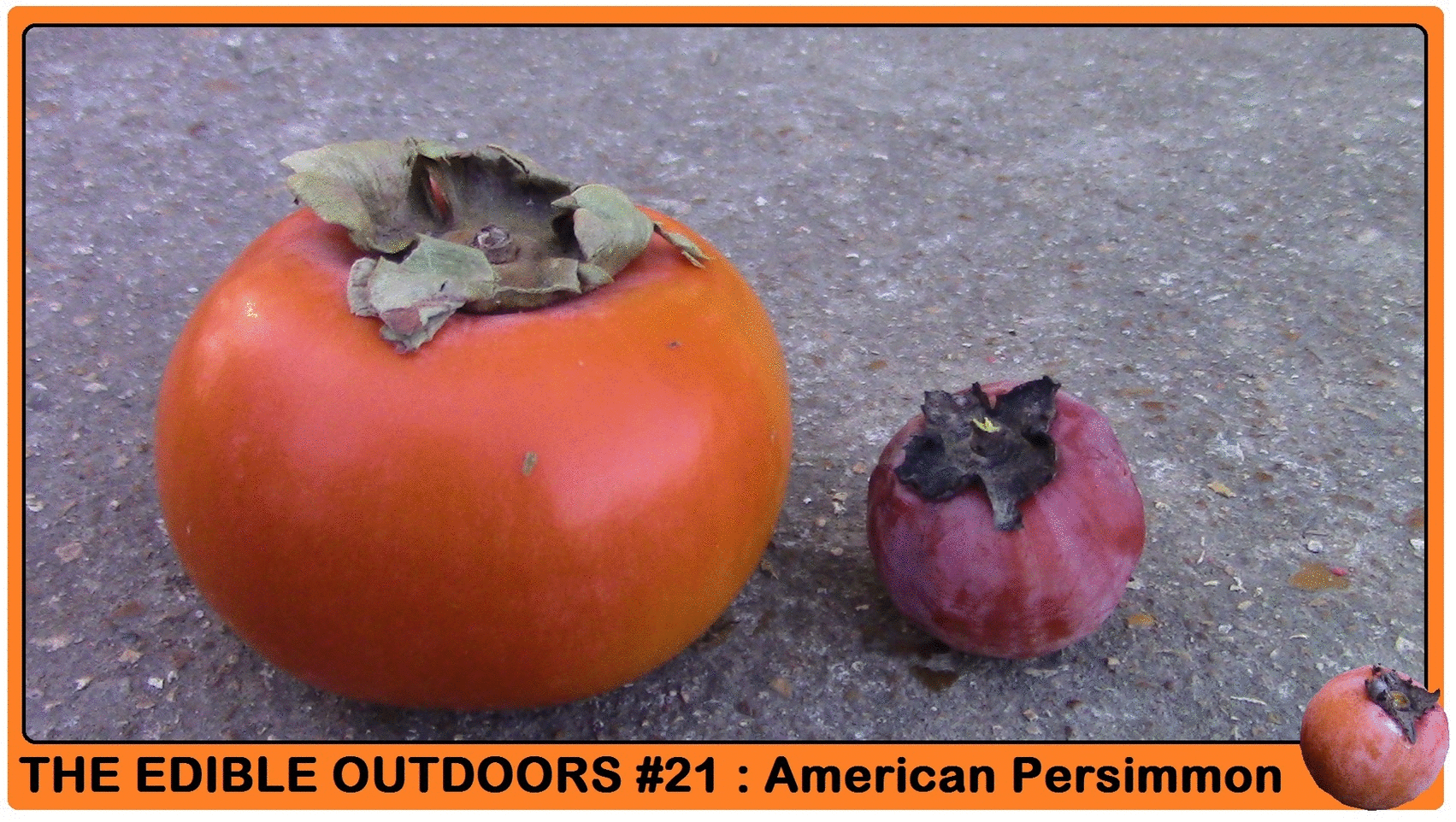
The fruit itself a variation of a kind that can be found around the world. Here, you can see the difference between an Asian variety “Fuyu” and the wild American Persimmon. The two main types of Persimmons that exist are “astringent” and “non-astringent.” The American Persimmon is an astringent variety, while the Fuyu is non-astringent. There are varieties that are native to both the Asian countries and the USA and Mexico. Over four million tons of Persimmons are produced worldwide each year.

HARVESTING WILD FRUIT
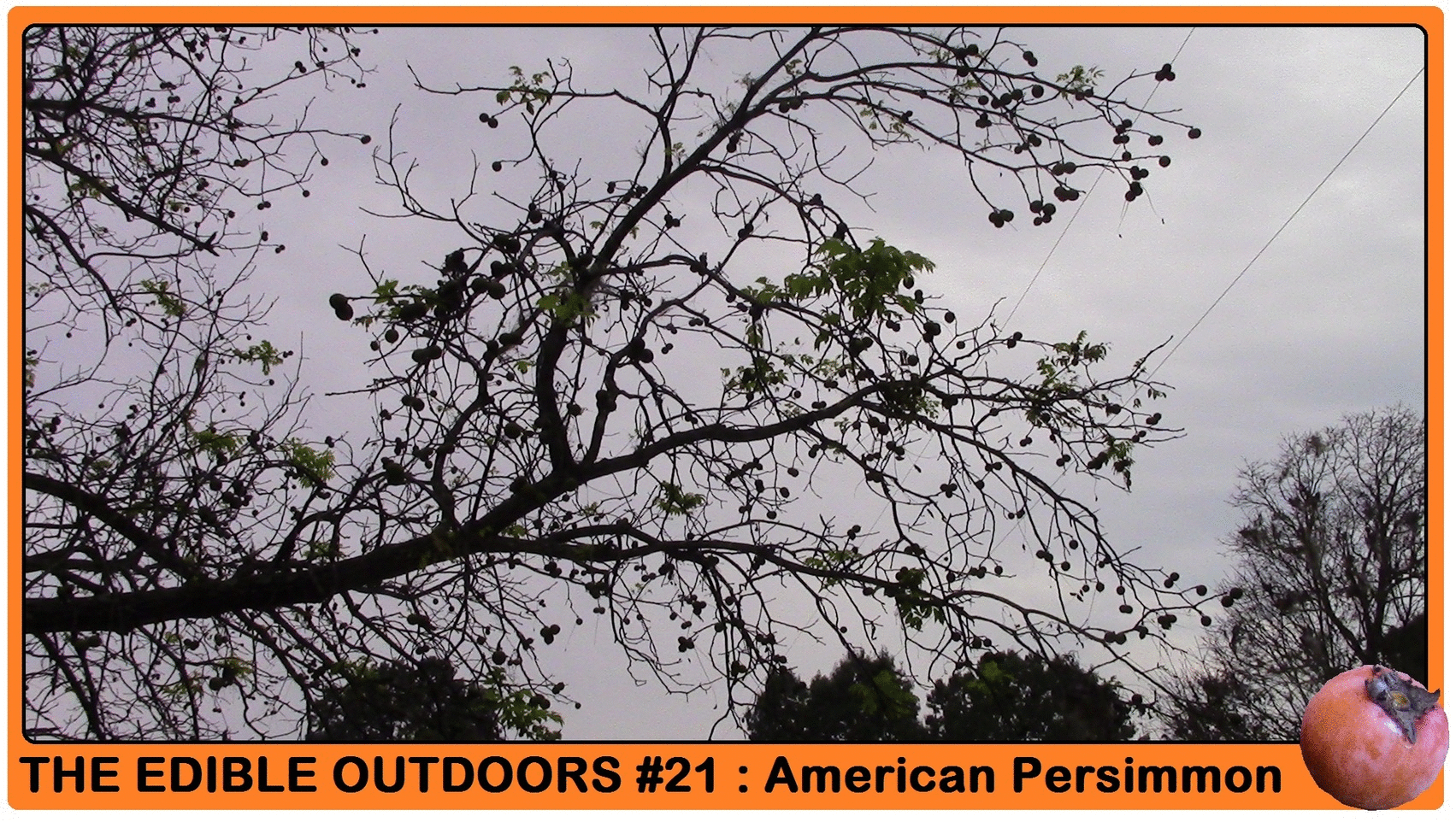
The trees can be very easy to identify once the fruit is ripe. The American Persimmon is the only tree I have seen around here that has small, round, orange fruit on it. One tree can produce a very large quantity of little Persimmons.
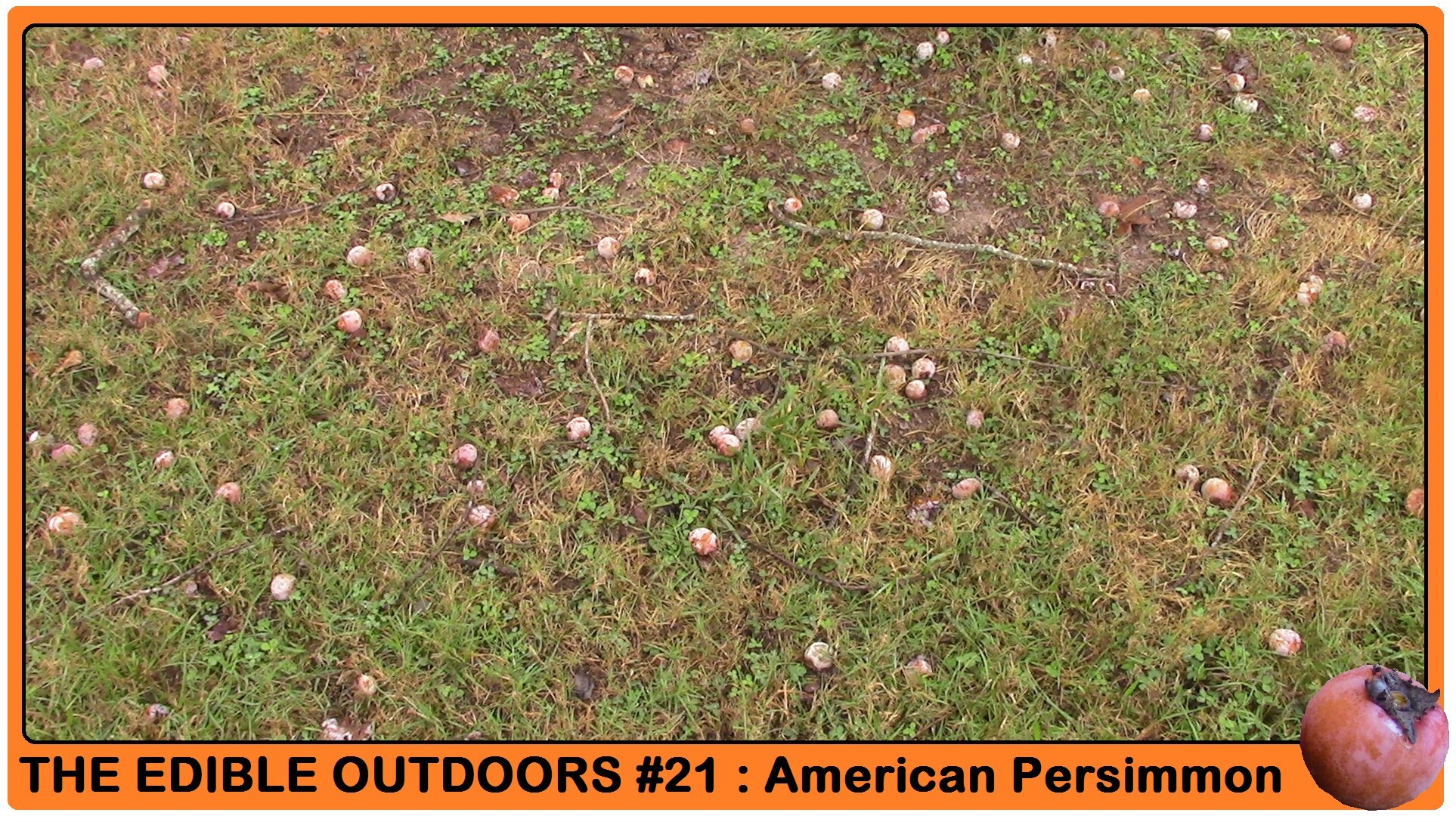
I would liken the flavor to that of an Orange Freezer Pop. However, if you try to eat the American Persimmon before it is fully ripe, you may not want to try it again. As I mentioned above, the American Persimmon is an astringent variety, which means that it can taste very unpleasant and bitter before they are ripe.
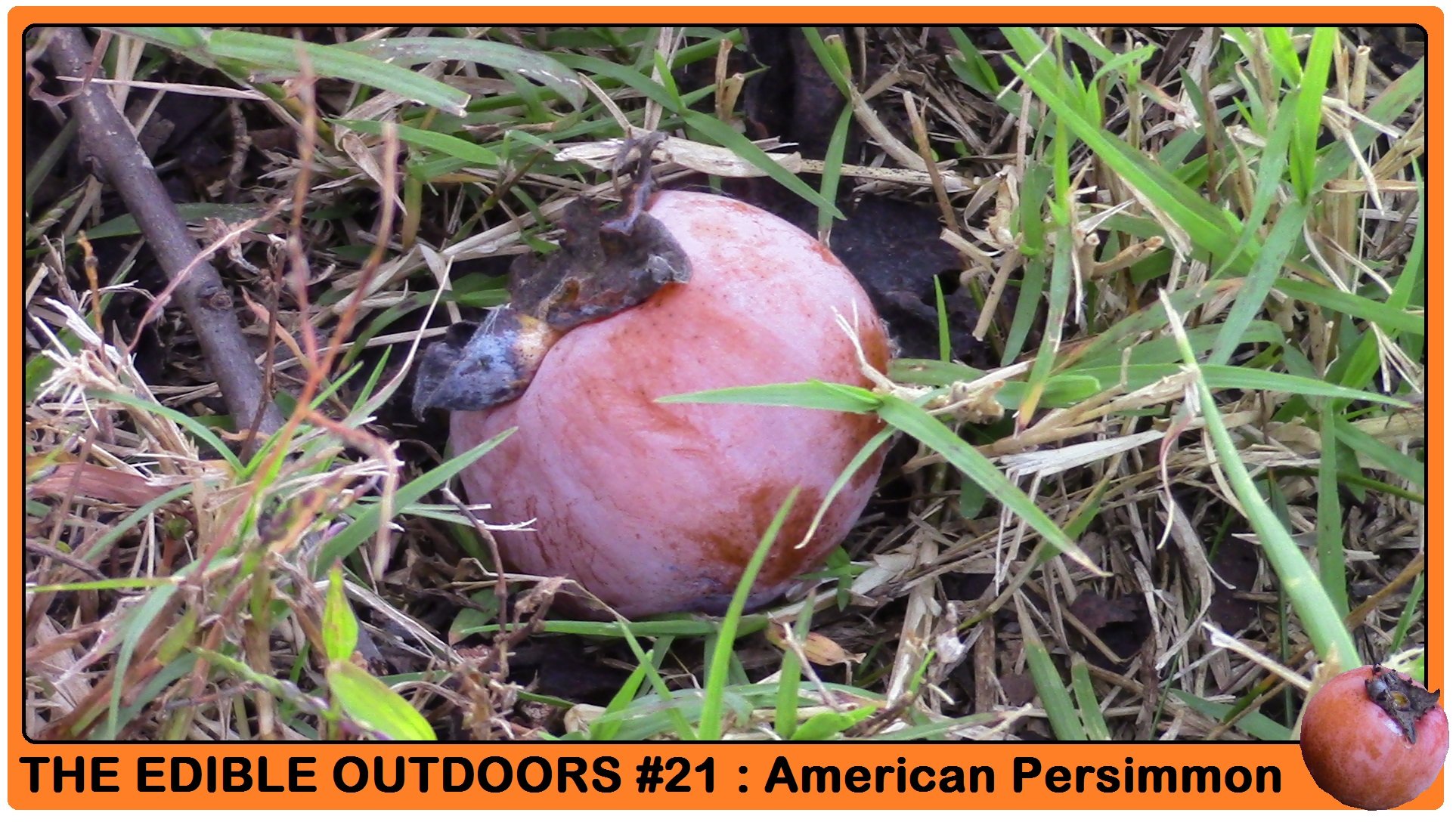
From my experience, two key factors can be used to help make sure that the Persimmons are fully ripe and ready to eat. One was is to wait for a hard frost. After a hard frost, I have noticed that most Persimmons that I pick off of the trees are ready to be eaten. The other method that I use is to wait for the fruit to fall to the ground.
It might seem strange to pick fruit off the ground rather than off the tree, but a lot of kinds of food grow on the ground, and many even grow underground. It seems that a lot of wildlife also waits for these fruits to fall, the most common being deer. Once the fruit start falling, deer can often be seen under Persimmon trees in the early morning or late evening.
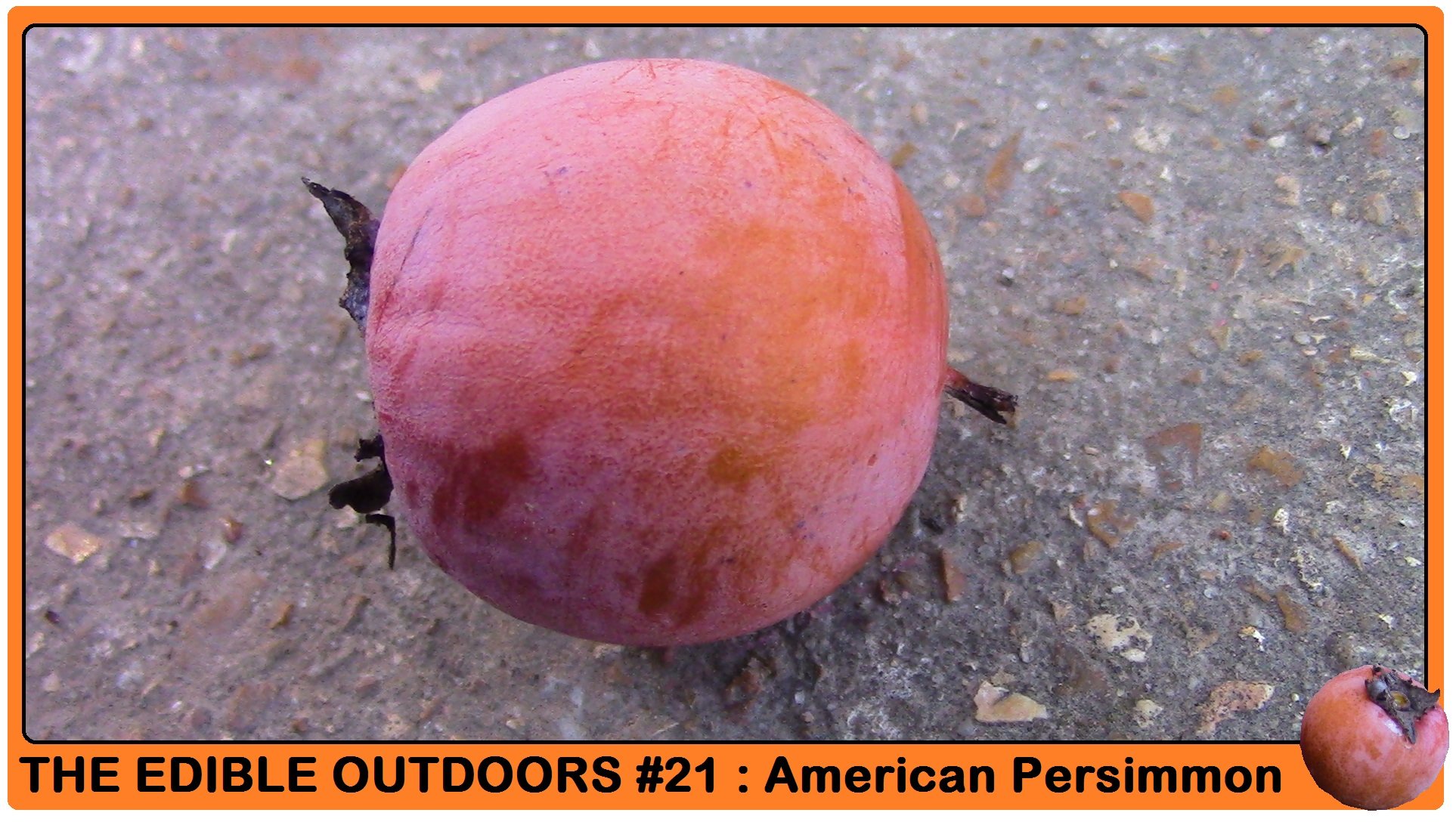
As far as wild food goes, this incredible fruit is one of the best that I can find. They are best to snack on in the woods or on a walk, because the flesh of the ripe Persimmons is very soft. This means that they squish very easily when they are ready to eat. I like to remove the top of the ripe Persimmon and then suck out the contents, discarding the skin.

PROPAGATION
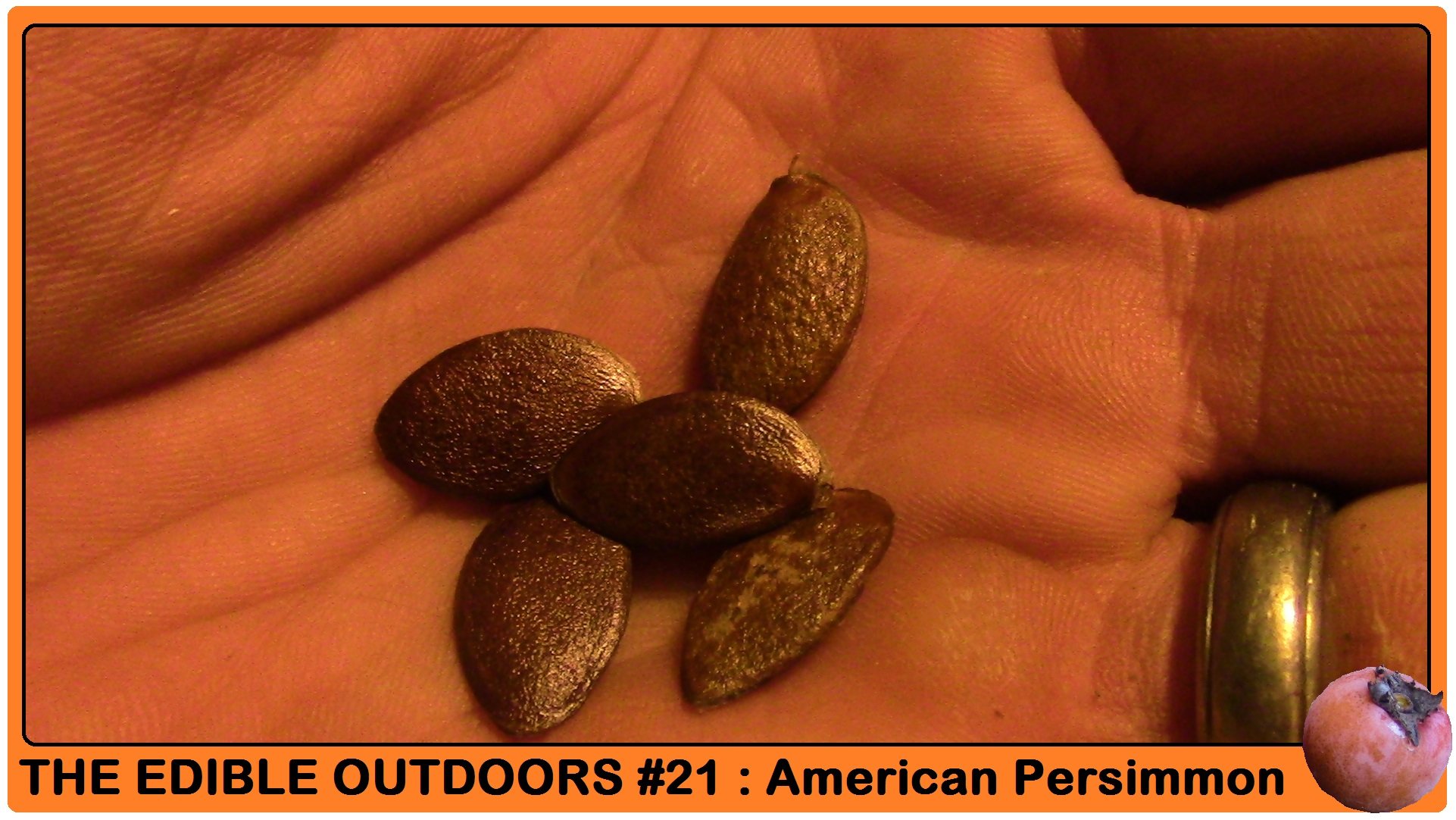
Inside the fruit of the American Persimmons are little oval seeds. It seem that most have about 4 – 6 seeds in them. Though I already mentioned that it take more than five years for a little Persimmon tree to bear fruit, seeds are still one of the best methods to get more Persimmon trees. Propagation techniques like layering do not work, and you can’t get branches or twigs to root either. I’ll be growing some other varieties of Persimmons to attempt grafting them onto some American Persimmon root-stock. The seeds I’ll be growing will be following the natural method, of planting them in the fall for growth in the spring, just like they would normally do in the wild.

CONCERNS
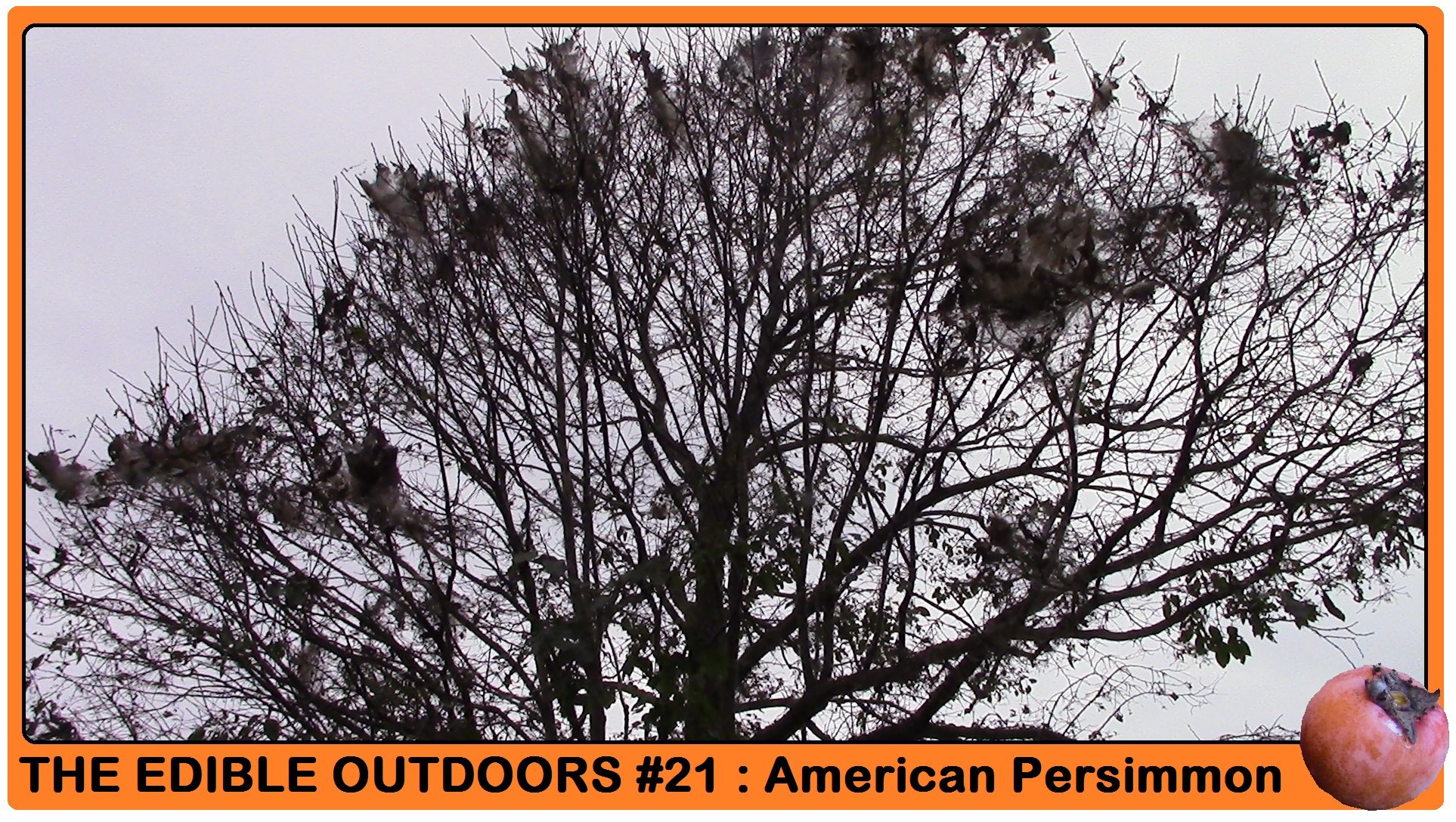
This fall, I noticed an issue that concerned me. A variety of tent caterpillars down here in Arkansas apparently really likes the Black Walnut and American Persimmon trees. This became one of the easiest ways to locate them in the fall. The trees basically looked like they were all covered in cob-webs!
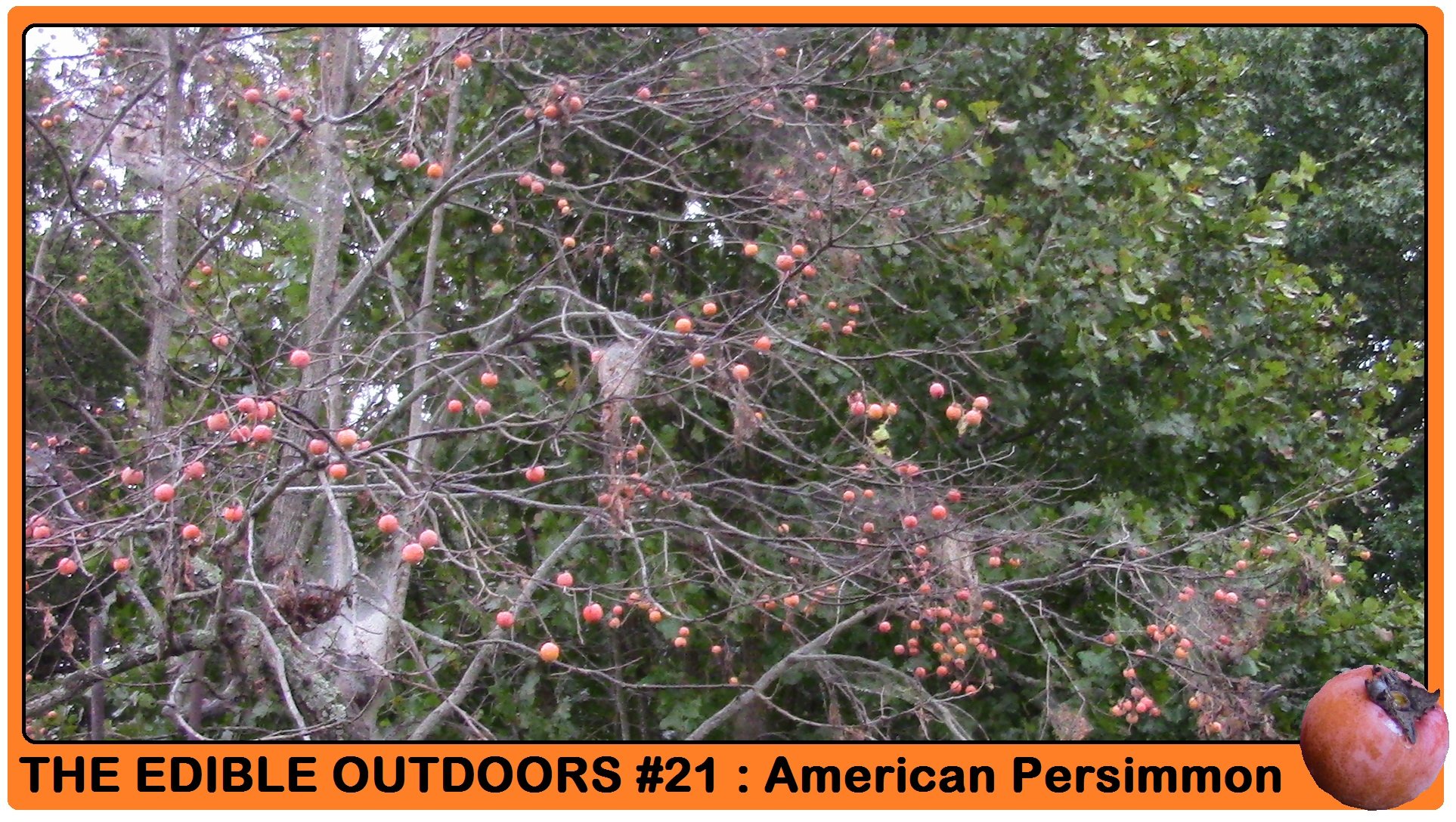
These caterpillars would eat every leaf on the tree, until only branches and fruit remained. When I saw this happening, I became concerned. However, after talking to the locals, it seems this shouldn’t affect the trees, or so they say. I’ll keep an eye on them in the future, but I’m hoping that the locals are right.

VIDEO
Here is my short video on the Persimmon. If you saw THIS POST from @anotherjoe three months ago, you may recognize the video.

As always, be very careful when attempting to enjoy edible wild plants. The best idea is to locate an experienced local who is familiar with the wild edibles in your area. Like many things, attempting to enjoy wild edibles on your own can be dangerous, and perhaps even deadly, so please be careful out there!
Here's previous THE EDIBLE OUTDOORS posts:
- 1-Common Yellow Wood Sorrel
- 2-Lamb’s Quarters
- 3-American Gooseberry
- 4-Stinging Nettle
- 5-Sassafras
- 6-Creeping Charlie
- 7-Dandelion
- 8-Plantain
- 9-Mint
- 10-Garlic
- 11-Purslane
- 12-Elderberry
- 13-Prickly Pear Cacti
- 14-Wild Lettuce
- 15-Passionfruit
- 16-Alfalfa
- 17-Chicory
- 18-American Beautyberry
- 19-Wintergreen plus a bonus, the Partridgeberry
- 20-Wild Chives
- BONUS-Getting Information Into Your Head Before You Need it

Except for the info from this source & this one,


FOLLOW



